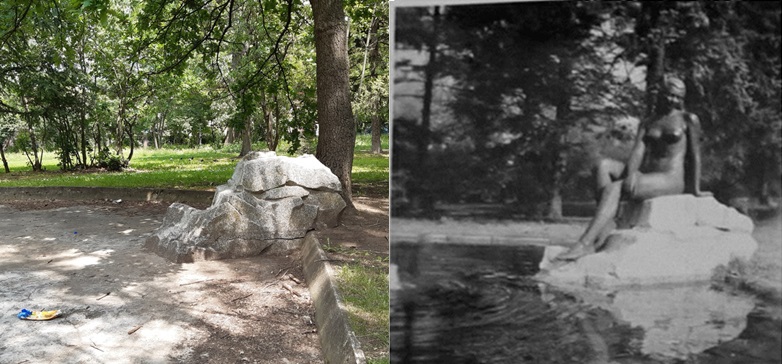Thessaloniki gets ready for its metro launch in November
The underground rapid transit lines have been under construction for almost two decades due to various project delays
 TheMayor.EU logo
TheMayor.EU logo 
The lily pond will feature a restored drinking fountain with an animalist sculpture of a bear, Source: City of Sofia
Its last major renovations were in 1986 and a lot of the infrastructure needs restoration
Yesterday, local authorities in Sofia presented their plan to restore and renovate the Borisova Gradina (the Knyaz Boris Garden) – the oldest and most famous park in Bulgaria’s capital. The re-development will happen in three stages, with the first one focusing on walkways, lighting and CCTV, the second one, focusing on public buildings like toilets and the third one – on the finer details like park ornamentations and special features like the famous lily pond.
The project will focus on a total of 32 hectares and it calls for 120 new lamp-posts 130 new cameras, more than 25,000 new bushes and trees, as well as an expansion of the irrigation system.
Furthermore, many of the park’s ornamentation, sculptures and decorations that have been stolen or otherwise destroyed over the years will be reconstructed using archive photography.

Many of the sculptures that were present in the park and are now gone will be restored,
Source: City of Sofia
The Knyaz Boris Garden was established in 1882, just three years after Sofia became the capital of Bulgaria after liberation from Ottoman rule. Back then, there were almost no paved streets in the city and to the dismay of many citizens, the construction of park infrastructure began in 1884.
At first, much of the area was used as a sapling nursery, which could be both used to populate the park and sell greenery to the population. The park’s contemporary look took shape in earnest in 1906, when the Alsatian Joseph Frei took over management.
He rearranged the paths and created the now-iconic lily pond and a Rosarium. The Rosarium, in particular, grew to cover 7,000 square metres with over 1,400 species under the park’s next manager Georgi Duhtev.
The parks’ last major reconstruction, though, was in 1986 and many of the sculptures, the rosary, alleys, ponds and water fountains have deteriorated or have been lost.
In 2018, City authorities re-established the Rosarium, complete with new park furniture and lamp-posts. Now, they are looking to build outwards from there and bring much of that fresh yet historic flare back to the rest of the park.
With that attitude of celebrating the site’s rich history, comes the idea of restoring much of the sculptures based on archival photography. The sculptures themselves are born out of a niche movement in Bulgarian Sculpture called the Animalist movement. It aims to reimagine animals as playground furniture and recreate lifelike exotic and domestic animals from bronze and stone.

The underground rapid transit lines have been under construction for almost two decades due to various project delays

Now you can get your wine in Talence by paying directly in Bitcoin

That’s because the state has to spend money on updating the railway infrastructure rather than subsidizing the cost of the popular pass

Rethinking renewable energy sources for the urban landscape

The examples, compiled by Beyond Fossil Fuels, can inform and inspire communities and entrepreneurs that still feel trepidation at the prospect of energy transition

Now you can get your wine in Talence by paying directly in Bitcoin

The 10th European Conference on Sustainable Cities and Towns (ESCT) sets the stage for stronger cooperation between the EU, national and local level to fast track Europe's transition to climate neutrality.

At least, that’s the promise made by the mayor of Paris, Anne Hidalgo

The underground rapid transit lines have been under construction for almost two decades due to various project delays

At least, that’s the promise made by the mayor of Paris, Anne Hidalgo

Hostal de Pinós is located in the geographical centre of the autonomous region

Despite its church-y name, the district has long been known as the hangout spot for the artsy crowds

Urban dwellers across the EU are having a say in making their surroundings friendlier to people and the environment.

Forests in the EU can help green the European construction industry and bolster a continent-wide push for architectural improvements.

Apply by 10 November and do your part for the transformation of European public spaces

An interview with the Mayor of a Polish city that seeks to reinvent itself

An interview with the newly elected ICLEI President and Mayor of Malmö

A conversation with the Mayor of Lisbon about the spirit and dimensions of innovation present in the Portuguese capital














